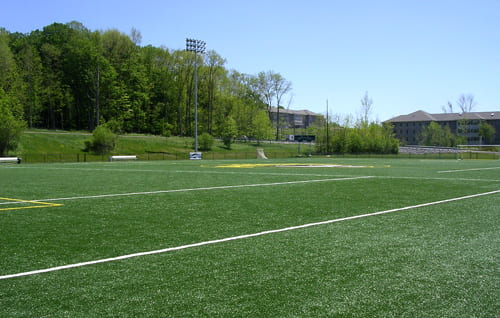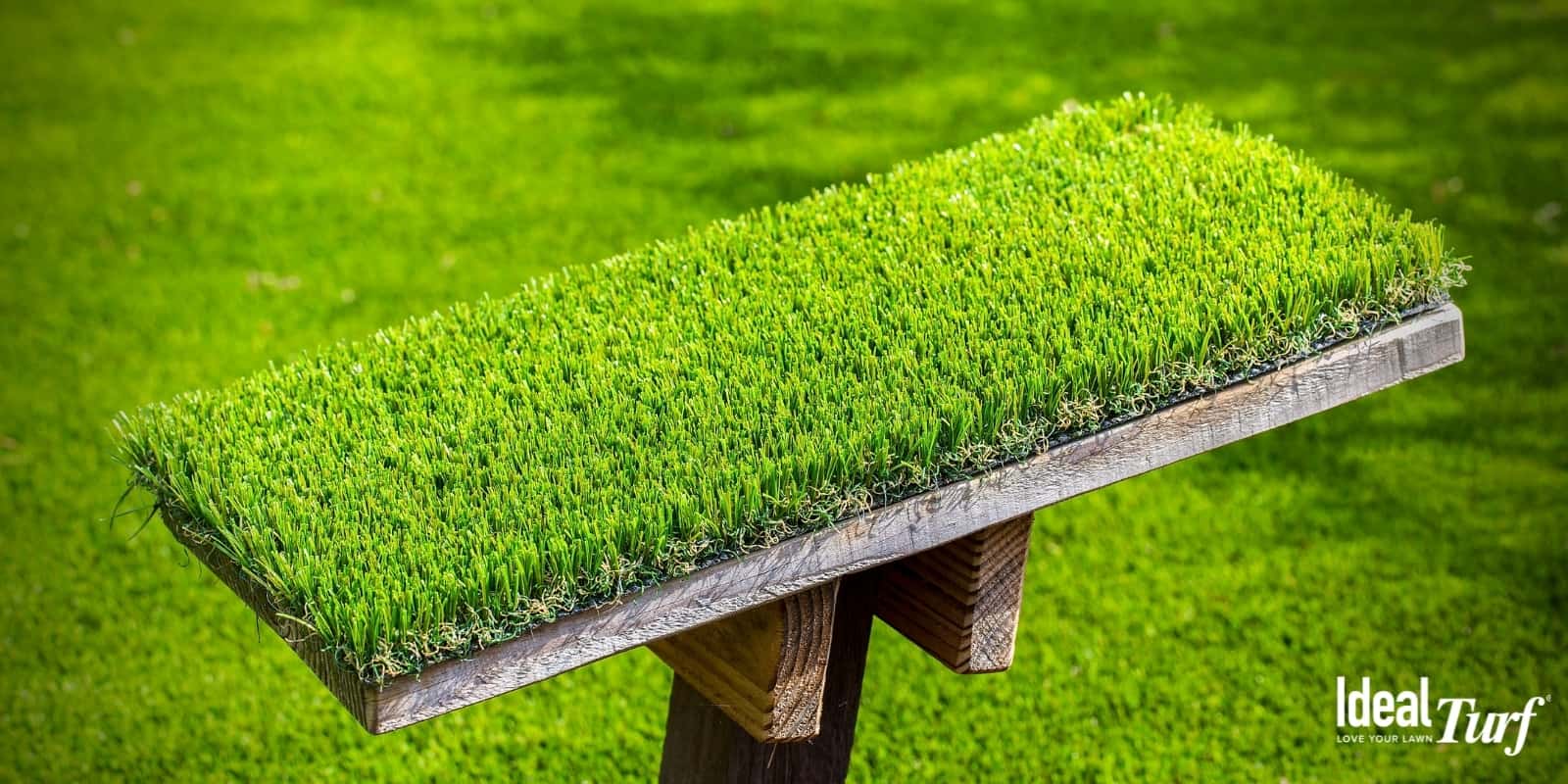Upgrade Your Yard with Reliable Turf Installation Phoenix AZ Services
Upgrade Your Yard with Reliable Turf Installation Phoenix AZ Services
Blog Article
Explore the Environmental Conveniences of Opting for Synthetic Grass Solutions
The adoption of synthetic grass options provides a compelling chance to deal with pressing environmental challenges. By substantially minimizing water usage and reducing the application of dangerous chemicals, these options not just advertise lasting landscaping however also shield neighborhood environments. The lower carbon impact connected with decreased upkeep activities adds to a much more sustainable approach to land monitoring. The effects of these benefits extend past simple preservation efforts, increasing questions regarding their lasting influence on habitat preservation and overall eco-friendly equilibrium. Discovering these dimensions discloses a complicated interplay worth taking into consideration.
Water Conservation Perks
One of the most substantial benefits of man-made turf is its ability to conserve water. In contrast, synthetic grass does not need watering, substantially reducing the general need for water sources.
By removing the need for routine watering, fabricated turf contributes to sustainable landscape methods and helps alleviate the ecological influence of too much water intake. Moreover, the preservation of water encompasses the decrease of runoff, which can cause dirt erosion and waterway contamination.
Furthermore, the installment of synthetic grass enables home owners and communities to allot water resources a lot more successfully, concentrating on essential uses such as alcohol consumption water and farming. The shift in the direction of synthetic grass not just advertises liable water use but additionally aligns with broader environmental goals focused on preserving natural deposits.
As neighborhoods progressively prioritize sustainability, the water preservation advantages of man-made lawn provide a compelling case for its fostering in property and industrial landscaping jobs.
Decreased Chemical Usage
The transition to synthetic grass considerably reduces the dependence on chemical treatments generally used in all-natural lawn maintenance. Conventional lawn management normally entails the application of fertilizers, herbicides, and pesticides to advertise development and control bugs. These chemicals can posture threats to human wellness, local wildlife, and the atmosphere, adding to soil and water contamination.
In contrast, synthetic grass gets rid of the demand for these hazardous substances. As soon as mounted, it calls for very little maintenance, mainly including routine cleaning and occasional infill replenishment. This reduction in chemical usage not just benefits the prompt atmosphere but likewise adds to wider eco-friendly stability. By minimizing the launch of artificial compounds right into the community, synthetic grass promotes healthier dirt and water supply.
Moreover, the lack of chemical overflow connected with synthetic grass installations helps safeguard regional rivers from pollution, supporting aquatic life and maintaining biodiversity. Arizona turf. As communities progressively prioritize sustainable methods, deciding for fabricated lawn offers a practical solution that lines up with ecological conservation goals. Via this shift, homeowner can delight in lush eco-friendly areas without endangering environmental health and wellness, leading the way for a much more sustainable future
Lower Carbon Footprint

Additionally, the installment of see this website man-made lawn can lead to significant water conservation. Natural grass require significant quantities of water for watering, which not only includes to the carbon impact connected with water extraction and treatment however likewise strains local water resources. On the other hand, synthetic grass requires minimal maintenance, needing no watering, thus dramatically reducing water use and its linked energy costs.
Additionally, the long life of fabricated turf contributes to its lower carbon impact. With a life expectancy of as much as 15 years or more, the demand for regular replacements is reduced, leading to less waste and reduced power intake in production and throwing away traditional lawn options. Generally, fabricated lawn offers a lasting choice for ecologically mindful landscape design.
Environment Conservation
Environment preservation is a vital factor to consider in the dispute over landscaping choices, specifically when comparing fabricated lawn to natural lawn. Natural grass yards often require comprehensive maintenance, consisting of using plant foods, herbicides, and chemicals, which can negatively influence neighborhood communities. These chemicals can leach right into the soil and rivers, damaging indigenous plants and animals and interfering with local environments.
In contrast, artificial lawn presents a chance to decrease the eco-friendly footprint of landscape design. By choosing artificial turf, home owners can lessen the interruption of natural environments connected with conventional lawn treatment practices. Synthetic grass gets rid of the requirement for damaging chemicals, therefore safeguarding neighboring wild animals and keeping the honesty of bordering environments. The installment of artificial grass can lead to the conversion of former lawn locations right into more biodiverse landscapes, such as pollinator gardens or indigenous plant locations, which can sustain local wildlife.
Ultimately, the transition to artificial lawn not just preserves water and lowers upkeep efforts however also fosters an extra harmonious connection between human activities and the all-natural setting, promoting habitat preservation while doing so.
Long-Term Sustainability
Long-term sustainability is an important aspect in assessing the advantages of man-made turf over conventional grass yards. One of one of the most considerable benefits of synthetic grass is its toughness; it can last up to 15-20 years with marginal upkeep, whereas natural lawn requires constant reseeding and replacement. This longevity minimizes the demand for consistent resources, such as water, plant foods, and pesticides, which are crucial for maintaining a healthy and balanced grass yard.
Additionally, synthetic grass adds to a reduction in carbon exhausts associated with grass treatment equipment. Typical grass often need anonymous gas-powered mowers, leaners, and blowers, all Full Report of which contribute to air contamination. Arizona turf. On the other hand, synthetic grass gets rid of the demand for such equipment, promoting a cleaner setting
Moreover, the production of fabricated lawn progressively uses recycled products, boosting its sustainability profile. As producers embrace environmentally friendly methods, the ecological impact of synthetic grass continues to reduce.

Final Thought
The fostering of synthetic grass options offers considerable environmental benefits, consisting of considerable water conservation, reduced reliance on dangerous chemicals, and a reduced carbon footprint. Moreover, synthetic grass aids in maintaining natural environments by reducing land disturbance and advertising long-lasting sustainability with the use of sturdy materials. Collectively, these elements highlight the possibility of synthetic grass to add favorably to environmental health and supply a viable alternative to typical landscape design practices in a significantly resource-conscious globe.
In contrast, artificial grass does not need watering, considerably decreasing the total demand for water sources. By lessening the release of synthetic substances into the ecological community, synthetic turf advertises healthier dirt and water systems.
Additionally, the installment of fabricated grass can result in significant water conservation. In comparison, synthetic turf requires minimal maintenance, calling for no watering, consequently considerably lowering water usage and its connected power expenses.

Report this page